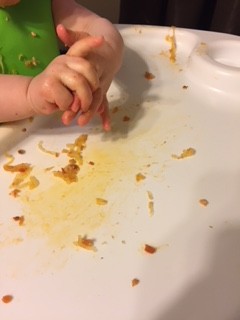
I’m often asked by clients about what to do with their “picky eaters”. Mostly these questions come from parents who feel like they have done EVERYTHING, parents who can perform the most complex of surgeries, or broker multi-million dollar deals in the board room….but can’t convince their four year old to try one floret of broccoli.
Often by the time I am working with them every meal has become a battle, involving tears, bribes or threats and still the broccoli remains untouched.
So in that vein I am sharing my top tips for introducing new foods to your “picky eater”!
1. Stop using the words “Picky Eater”.
Just take them right out of your vocabulary. The words picky eater don’t mean anything and they absolve you and your child of your individual meal time responsibilities (more on that in tip number two). If your child had a peanut allergy would I recommend putting a peanut on his plate? Absolutely not! If your child is lactose intolerant- is serving them a whopping amount of dairy at a meal a good idea? Also no. But picky eating is NOT that. If your child has distinct food preferences should you put a new food on their plate? Absolutely! By labelling your child as a picky eater you make it less likely that you as a parent will introduce new foods to them, and that when new foods are introduced they will be willing to try them. By calling your child a picky eater you are telling them that they don’t try new foods- so of course they won’t when presented with one!
2. Remember divisions of responsibility.
As a parent you are responsible for many of the meal time choices. You decide where your child will eat, how food will be served, when food will be served AND what will be served. Again, you and only YOU decide what will be served. If you decide that tonight’s dinner is salmon- tonight’s dinner is salmon. It’s not the peanut butter sandwich or cereal or plain bread or whatever else your child is going to ask for instead. Why? Because that’s what the family is having for dinner.
Your child is always responsible for IF and how much they want to eat. Only your child (read: NOT you) can decide how hungry they are, how many bites they need to try before being done or if they are even willing to try something new that evening. By allowing them the space to do this you are teaching them to trust their own little bodies to trust their own hunger and satiety cues and their own personal preferences leading to healthier eating habits and relationships with food in the future.
3. Be okay with no (OR practice your poker face).
Practice this…put an item of food in front of your child. Then turn around (staying within a safe distance of course) and completely ignore the situation. Pretend that it doesn’t matter to you whether or not your child eats their meal. Do not mention the food on their plate. Do not suggest that they eat the food on their plate, just sit there and allow them the space to decide if they will.Remember your role at meal time and allow them to take responsibility for theirs. If they don’t eat very much at that meal remember that that is okay, because they will have the opportunity for more nutrition at other meals and snacks.
Little children have control over so little in their environment. Parents set their schedules, often pick their clothes, the list goes on. So when a parent goes to battle with their child over the one thing they can definitely control (whether or not they open their mouths) you can bet that parent is setting themselves up for a battle they will never win!
By taking the fight out of food, parents can reduce their meal time stress, tears, and promote healthier eating habits for their children. For more information on how you can reduce meal time stress visit our services page, call or email!
